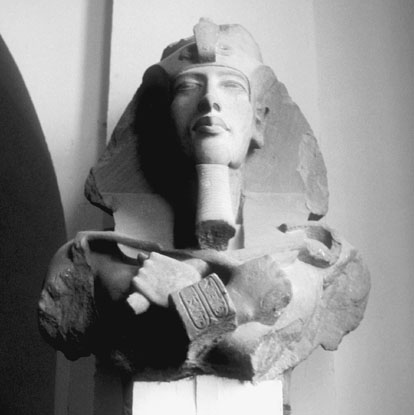

 | Page 461 |  |
conserving tombs of Memphis officials of the New Kingdom, including the tomb built for tutankhamun’s general Horemheb, who later became king himself.
In 1982, the society celebrated its centenary with a special exhibition at the British Museum and by launching a project, directed by David Jeffreys and Lisa Giddy, to survey and investigate the site of the capital city of Memphis. In recent years, a number of smaller-scale projects have been initiated, surveying sites such as the Wadi Abu Had in the eastern desert of Egypt and Gebel el-Haridi in Middle Egypt. In 1992, the society responded promptly to a call from the Egyptian Antiquities Organisation for archaeological assistance in recording sites in northern Sinai that were threatened by the construction of the El-Salaam Canal.
The results of the society’s work in Egypt are published in various series of memoirs. The society also publishes the prestigious annual Journal of Egyptian Archaeology and, since 1991, a color magazine, Egyptian Archaeology, which presents articles on fieldwork and research in a more popular style.
The Egypt Exploration Society has offices and a library in London, and membership in the society is open to anyone with an interest in ancient Egypt. Lectures and social events are held in London and Manchester. In 1992, an office was opened in Cairo to provide support for field expeditions and an increased level of activities for members in Egypt.
References
Dawson, W. R., and E.P. Uphill. 1972. Who Was Who in Egyptology. 3d ed. London: EES. 4th ed., 1995.
Edwards, Amelia B. 1877. A Thousand Miles up the Nile. London: Longmans. Paperback reprint, U.K.: Quentin Crewe, 1982.
James, T.G. H., ed. 1982. Excavating in Egypt: The Egypt Exploration Society, 1882–1982. London: British Museum Publications.
Tell El Amarna was a new city created during the eighteenth dynasty by the heretic pharaoh Akhenaten (1353–1337 b.c.) as a place of worship for the god Aten, and it was abandoned soon after Akhenaten’s death. El Amarna was the site of significant excavations by sir william matthew flinders petrie between 1891 and 1892, and apart from a short period immediately prior to World War I, when the site was worked on by German archaeologist Ludwig Borchardt (1911–1914), El Amarna has seen three sustained campaigns by the egypt exploration society.

Akhenaten, the pharaoh who built El Amarna
(Ann Ronan Picture Library)
See also
Egypt: Dynastic; Egypt: Predynastic
The first descriptions of archaeological sites in El Salvador were by nineteenth-century visitors from North America and Europe. Excavations of architectural centers, including Quelepa, Cihuatan, Tazumal, Campana San Andres, and Los Llanitos, went hand in hand with an interest in defining the spatial distribution of Maya-, Lenca-, and Nahua-speaking Pipil ethnic groups reported from the sixteenth century. Modern research has been concerned with clarifying the relations of the earliest sites with early Mesoamerican cultures, exploring the effects of volcanism and the possibility of migration out of and into the country following major eruptions,
 |  |